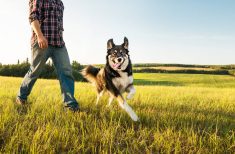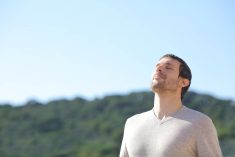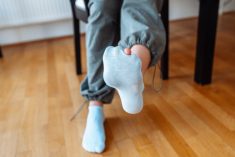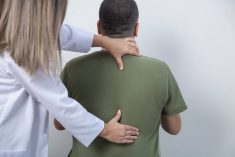The oldest remedy in the world?
It’s amazing think of how much we humans have evolved to handle. Our biology never ceases to come up with ways to move us forward.
Many of the life-threatening diseases we face today are relatively new to human history. Chronic diseases like diabetes, heart disease and obesity are considered modern-day health concerns.
Read Also

Gentle treatments for pain in the neck
Heading toward year-end, people unknowingly tense up against the cold and busyness, causing neck pain that can often be treated with appropriate support and gentle mobility, athletic therapist Kathlyn Hossack says.
That being said, our ancestors still had to deal with afflictions like arthritis, cancer, mental health injuries, systemic diseases and other traumas. In many ways our modern-day medical system has evolved along with our modern-day diseases within a short span of history.
Interestingly enough, many of the treatments that are effective for the health challenges we’ve faced for thousands of years remain staples in many cultures. Modern-day science is beginning to prove why and how those ancient remedies are effective.
Pick a point in human history and you’ll find a few commonly used tools for health and well-being. These remedies include community gathering, herbal remedies, music, breath practices and movement combined with rhythm, commonly known as dancing.
Whether it was directly prescribed or simply a part of regular community well-being, the use of music and movement can be found time and time again as a part of human nature.
Modern day scientific inquiry has shown a few interesting reasons for why moving our bodies to music is so effective in boosting the health of individuals and communities.
Dancing, just like other forms of aerobic exercise, utilizes our whole body through a variety of movements. Those who dance regularly have improved cardiovascular health, bone density, mobility, functional body strength and immune system function.
Along with its physical benefits, dancing has been shown to improve memory, mental and emotional well-being and social engagement.
Any kind of dance gets the whole body moving and engages the senses, and it can also be done alone, with a partner or in a group. It truly is a remedy that works on multiple levels for multiple reasons.
For my clients who struggle with high levels of stress, anxiety or depression, one of the first things I want them to do is to find ways to engage with their body intentionally.
Having them pick a song and move to it can be a way to regulate their nervous systems and decompress. Whether they move slowly, to a fast beat or somewhere in between matters much less than simply getting moving in some way.
While there are many technically correct ways to dance, dancing for the purpose of wellness is less about being well co-ordinated and more about sinking into your body and your senses and letting the music and your body connect.
A simple, accessible way to engage with movement in this way can be to put a song on, just one, and move to it once a day or a few times a week. This can be done solo, with young kids (great for helping them burn off some energy, move their bodies and regulate their nervous systems), or with a partner or friends.
Working this into your routine as we head into winter may just be the trick to chase away the winter blues!















